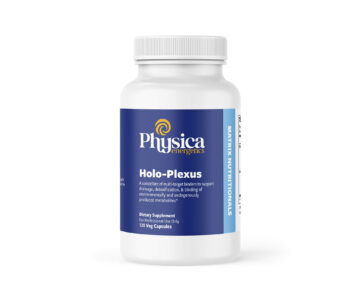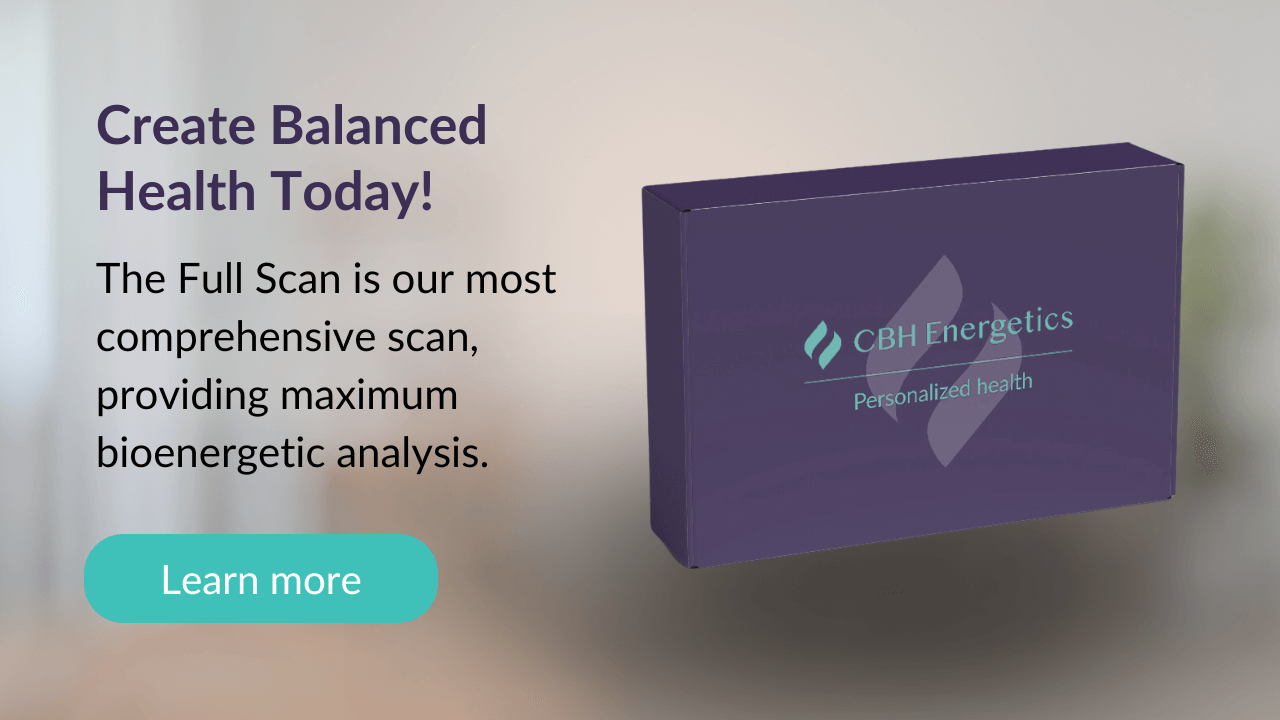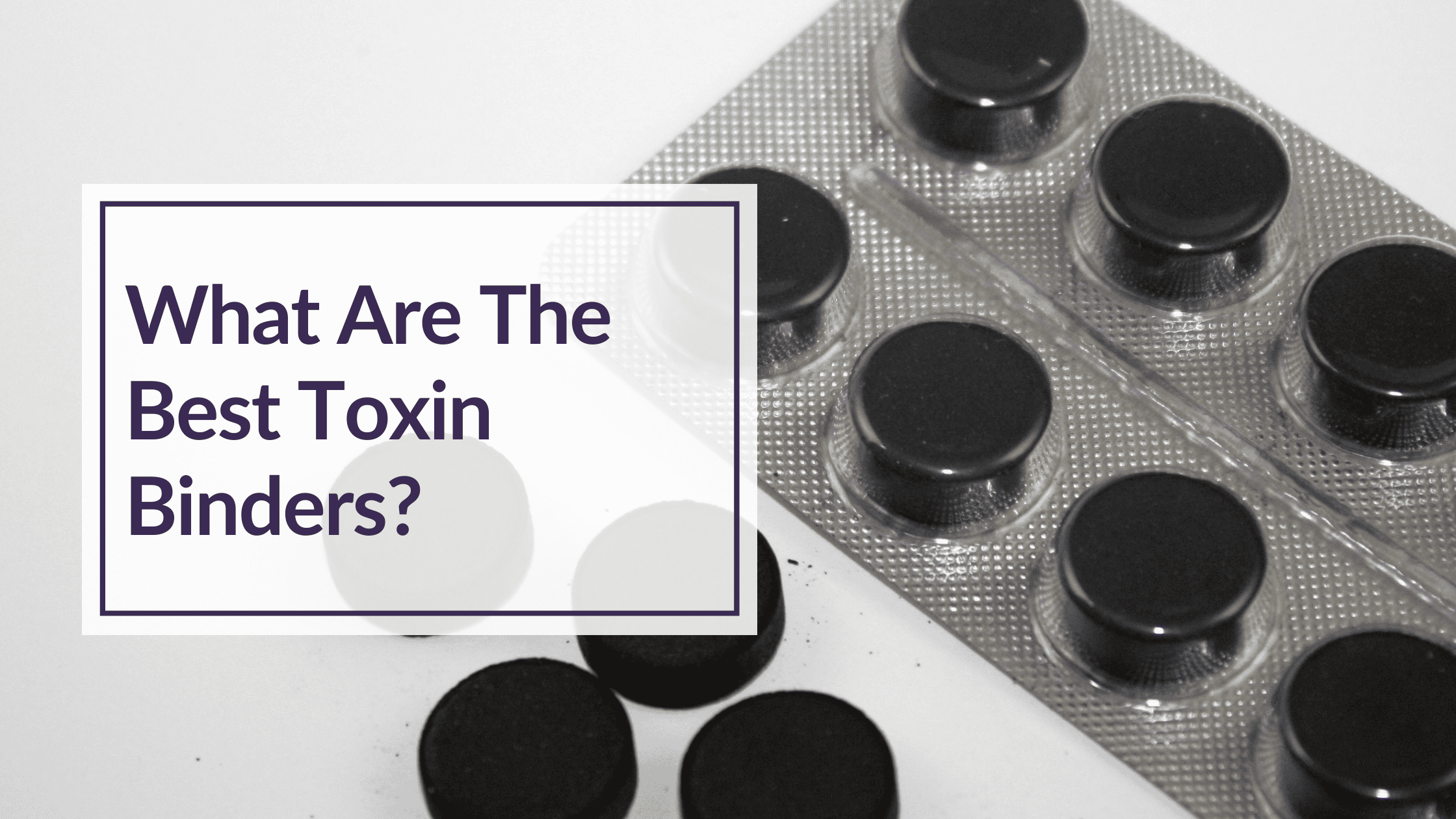
What Are the Best Toxin Binders to Use?
Detoxification is a daily process that helps our bodies eliminate harmful substances. To support this process, we can enhance drainage pathways (the ways in which the body removes waste and toxins, including organs like the liver, kidneys, lymphatic system, and colon), incorporate powerful herbal or homeopathic remedies, and use toxin binders. We are exposed to a variety of toxins in our daily lives, and while our bodies have their own built-in detox mechanisms when it comes to mold issues or other biotoxins, we need to help these systems along.
The detoxification process keeps our bodies running smoothly and may help to reduce health issues. One of the most powerful tools in the detox arsenal is the use of toxin binders. These are specialized compounds that can grab toxins and facilitate their safe removal from the body.
But is there a toxin binder that is the best?
Each binder, just like each person, is unique. This post will cover what a toxin binder is, introduce 11 types of the best toxin binders for humans, and discuss additional supports to ease the detoxification process, especially if you’re sensitive to binders. When considering binders to eliminate toxins, you’ll find different types to choose from, each with its own unique properties and benefits. One thing we often forget is that the best binder to start with is fiber.

How Do Toxin Binders Work?
Binders work by clinging to various toxins, such as heavy metals, mycotoxins, and other environmental pollutants, and escorting them out of the body through the detox and drainage pathways. This process helps to reduce the overall toxic burden. By incorporating the right toxin binders, you can enhance the effectiveness of your cleansing efforts and experience the benefits you are hoping for, including improved energy, better cognitive function, and reduced inflammation.
The 11 types of toxin binders we’re covering here are:
- Fiber: both soluble and insoluble
- Probiotics
- Activated Charcoal
- Bentonite Clay
- Chlorella
- Zeolite
- Chitosan
- Silica
- Humic & Fulvic Acids
- Broccoli Sprouts
- Sarsaparilla
5 Things to Consider When Choosing the Best Toxin Binders
Before we explain the 11 best toxin binders for humans, we must stress that not all binders are created equal. Each binder has its own unique attraction to certain toxins and nutrients. This is something to keep in mind when choosing binders for detox.
1. Toxin Specificity: Different binders have varying affinities for specific types of toxins. Consider the primary toxins you’re looking to address and choose binders that are known to be effective against those substances.
2. Absorption and Elimination: Ensure that the binders you choose can effectively bind to toxins and facilitate their safe removal from the body through the digestive system or other elimination pathways.
3. Purity and Quality: Look for high-quality, pure binders that are free from any potentially harmful additives or contaminants. Opt for reputable brands that prioritize safety and efficacy. CBH Energetics partners with Physica Energetics, DesBio, Supreme Nutrition, and Cellcore Biosciences.
4. Compatibility with Your Health Condition: If you have any pre-existing medical conditions or are taking medications, consult with your healthcare provider to ensure the binders you choose are safe and appropriate for your individual needs.
5. Ease of Use and Palatability: Consider the format of the binders (e.g., capsules, powders, liquids) and how easily they can be incorporated into your daily routine.
11 Types of Toxin Binders
Let’s take a closer look at some of the common binders for detox:
1. Fiber. If you have not incorporated the recommended daily allowance of fiber in your diet, this is a great starting point! Both insoluble and soluble fiber bind to toxins and feed the Digestive System’s microbiota. According to Harvard Health, the average person consumes only about 10-15 grams of fiber a day. The USDA recommends 38 grams for men and 25 grams for women up to age 50. Some people may need more to keep their bowels and elimination moving.
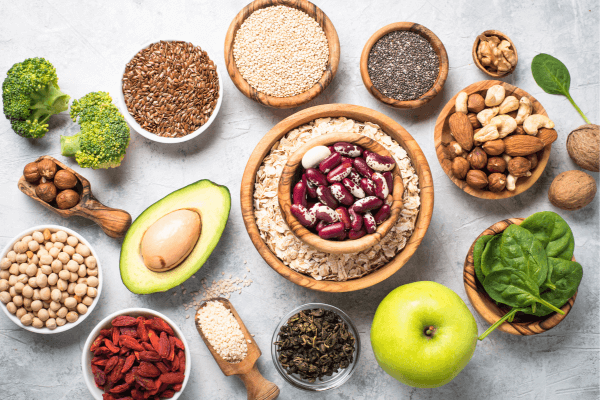
2. Probiotics. It sounds weird, but probiotics can act as toxin binders. The probiotic yeast Saccharomyces boulardii has been shown to inhibit the growth of C difficile in the gut. Dr. Neil Nathan, MD, author of the book Toxic: Heal Your Body from Mold Toxicity, Lyme Disease, Multiple Chemical Sensitivities, and Chronic Environmental Illness, notes that he uses this probiotic as a binder for gliotoxins. Both Lactobacillus rhamnosus and Saccharomyces boulardii have demonstrated binding capacity for mycotoxins.
3. Activated Charcoal.
Activated charcoal supplements come from charcoal that is oxygenated at a high temperature to make it more porous. Other forms of activated charcoal as a toxin binder come from natural sources like coconut shells. The processing with oxygen increases its ability to absorb toxins and other harmful substances. Animal studies have shown that ochratoxin A has an affinity for activated charcoal binders. The great thing about activated charcoal is that it can be taken orally or used in detox baths and face masks!
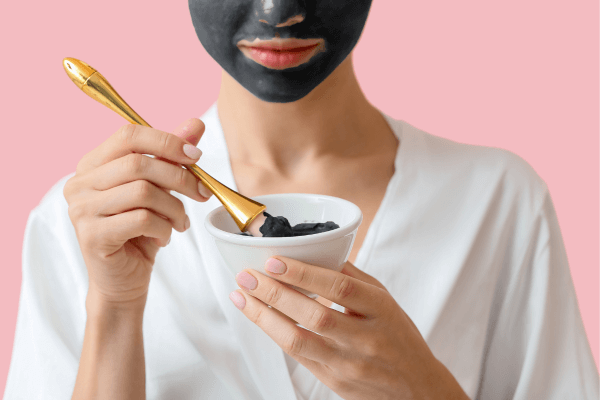
4. Bentonite Clay. Bentonite has been used internally and topically in many cultures for centuries. It helps to bind and remove heavy metals, chemicals, and, in some instances, aflatoxins from the body. It can also be used topically as a face mask for acne. Many recipes blend water, bentonite clay, and tea tree essential oil.
5. Chlorella. This freshwater algae is a highly nutritious seaweed and a well-known heavy metal binder. Chlorella contains vitamin A, zinc, magnesium, and iron and can easily be added to smoothies or taken as a supplement. BIG BONUS: chlorella can support your Cardiovascular System.

6. Zeolites. These are a group of mineral compounds, specifically hydrated aluminosilicate minerals. Zeolite clinoptilolite has many uses in human and veterinary applications because it can detoxify, support the gut microbiome, deliver trace elements, and provide antioxidants. This binder may be effective when clearing metals like lead.
7. Chitosan. Derived from shellfish, chitosan is a fibrous compound (chitin) from the shells of crustaceans. As a binder, chitosan is said to attract fat and cholesterol, potentially aiding in their removal from the body. It is commonly sold as a dietary supplement for its potential benefits in supporting weight management.
8. Silica. Did you know that silica is second only to oxygen in its abundance on Earth? It’s a natural part of foods such as bananas, green beans, brown rice, and greens. Whole foods are one of the best ways to consume silica for health benefits. Silica is used in the food industry as a food additive for anti-caking, anti-foaming, modifying dough, and clarifying beverages. As a dietary supplement, silica supports bones and collagen – part of the Locomotor System on a Full Scan report. It also may support the removal of heavy metals. Pass the green beans, please!
9. Humic & Fulvic Acid. These organic compounds are found in soil and water. They form from the decomposition of organic matter, such as dead plants and animals. Humic and fulvic acids are rich in minerals and other essential nutrients for plant growth. Organic matter like soil plays a dual role as both a ‘source’ and ‘sink’ for contaminants. Soil can contain contaminants and also carry contaminants away. Due to its microorganisms, soil has a cleansing action. Humic and fulvic acids are the end products of decomposition and can bind to toxins.
10. Broccoli Sprouts. Shouldn’t these be in the fiber category? Absolutely! But broccoli sprouts and other cruciferous veggies do have a place in this lineup due to their high amount of sulforaphane. They support liver detoxification, especially in Phase 1 and Phase 2. While not exactly a binder, they increase the amount of toxins that can be excreted by the body.

11. Sarsaparilla. This is an herbal supplement made from the root of the tropical sarsaparilla plant. Aboriginal elders and indigenous populations have used this plant for joint and blood sugar issues and as a natural estrogen supplement during menopause. Like broccoli sprouts, sarsaparilla helps support liver detox, and it may bind endotoxins in the gut.
How to Incorporate Toxin Binders into Your Detox Routine
Incorporating detox binders into your routine can significantly enhance the removal of toxins from your body. There are some important considerations before you start using toxin binders:
1. Assess Your Needs: Determine the specific toxins you’re looking to address and choose binders that are known to be effective against those substances. Knowing if you are dealing with specific mycotoxins, candida, or a gut imbalance helps you choose the binder that is right for you. Some binders are not appropriate for pregnancy and breastfeeding.
2. Start Slowly: Begin with small doses and gradually increase the amount over time. This helps your body adjust and minimize potential side effects.
3. Timing is Key: For optimal effectiveness, take your binders at least 30 minutes before meals or 2 hours after meals. This will help ensure the binders have the opportunity to bind to toxins before they are eliminated.
4. Hydrate Adequately: Drink plenty of water throughout the day to support your body and prevent constipation. Some binders can decrease bowel movements. Hydration helps your body flush out toxins through urination and sweat!
5. Consider Synergistic Supplements: In addition to binders, you may also want to incorporate other detox-supporting supplements, such as antioxidants, probiotics, and liver-supporting homeopathic drainage remedies, such as Liver Milieu, to enhance the overall effectiveness of your detox routine.
6. Monitor Your Progress: Pay attention to how you feel during and after using toxin binders, and be prepared to adjust the amount you are taking.
7. Rotate Your Binders: Consider rotating the types of binders you use to address a broader range of toxins and prevent the build-up of any one particular substance.
8. Pair with Mobilizing Agents: Combine your binders with substances that can help mobilize and release toxins from the body’s tissues, such as lipoic acid, NAC, glutathione, or cilantro. If you’ve not learned about the benefits of NAC, your next read is this blog: Benefits of NAC Supplements and Foods.
9. Support Liver and Kidney Function: Ensure that your liver and kidneys are functioning optimally to process and eliminate the toxins bound by the binders effectively.
10. Prioritize a Healthy Diet: Complement your detox binder routine with a nutrient-rich, whole-food diet that is low in processed foods and high in antioxidants, fiber, and other detox-supporting nutrients.
11. Engage in Detox-Friendly Lifestyle Practices: Incorporate other detox-supporting activities, such as regular exercise, stress management techniques, red light use, and sauna therapy, to enhance the overall effectiveness of your detox program.
Potential Downsides of Using Toxin Binders
Toxin binders can be a powerful tool for supporting your body’s natural cleansing processes, but there are a few things to keep in mind:
- Digestive Discomfort: Some binders, such as bentonite clay and chlorella, may cause temporary digestive issues, including bloating, constipation, or diarrhea, especially when first starting. This is why we always suggest starting with low amounts and slowly incorporating them into your routine by using them every other day.
- Nutrient Depletion: Binders can potentially interfere with the absorption of certain nutrients. To mitigate this, take binders away from meals and other nutritional supplements.
- Medication Interactions: Some binders, like activated charcoal, may interact with certain medications by reducing their absorption. Please consult your licensed healthcare provider if you have questions about taking binders.
- Allergic Reactions: In rare cases, individuals may experience allergic reactions to the ingredients in detox binders. If you experience any adverse symptoms, such as rash, swelling, or difficulty breathing, discontinue use and seek medical attention immediately.
- Pregnancy and Breastfeeding: Not all binders are safe for pregnancy and breastfeeding. This is why you may see an array of homeopathic drainage remedies in your Full Scan balancing remedy section. Homeopathic remedies offer a gentle and safe alternative to some toxin binders.
Most people can easily and safely use toxin binders when being mindful of these considerations.
Detox binders are a powerful tool in the fight against the accumulation of harmful toxins in the body. By understanding the different types of binders, the factors to consider when choosing the best options, and how to incorporate them into your routine, you can take a proactive approach to support your body’s natural cleansing processes.
The key to successful detoxification is finding the right binders that cater to your specific needs and incorporating them into a comprehensive detox program. Be patient, listen to your body, and don’t hesitate to reach out if you have any concerns or questions. Ready to embark on a more effective detox journey?
Explore our array of bioenergetic tests to remove the guesswork of detox and supplementation!
FAQ’s To Help You With Toxin Binders
Do I really need binders?
That depends on the individual. Everyone’s body reacts differently to different binders. When working with CBH Energetics, we focus on stimulating your body’s own detoxification systems. This starts with opening up drainage pathways. Our FREE guide, Reset Your Body: An Introduction to Detox, can get you started!
Why are there no binders on my report?
The regimens are tested against your samples and matched to what your body needs right now. You may need more nutritional support, drainage, or help to alleviate constipation before implementing even the gentlest binder. Your bioenergetic test may not call for a binder at this time.
How does my homeopathic remedy act as a binder?
Some remedies, especially homeopathic remedies, “remind” the body to do a specific job. Some remedies, such as Liver Milieu, are gentle signals to the organ to uplevel their own processes, taking matters into their own hands and getting back on an energetic track to do what they were designed to do.
Can toxin binders help with mold detoxification?
Yes, certain toxin binders, such as activated charcoal and zeolite, are commonly used to support mold detoxification by trapping mold toxins in the digestive tract and preventing their reabsorption. However, mold detoxification often requires a multifaceted approach that includes addressing environmental exposure, supporting the immune system, and managing inflammation.
How do I choose the right toxin binder for my needs?
Testing is one way to identify the best toxin binder for your needs! Your choice will all depend on the type of toxins you’re aiming to eliminate. For general detox and nutritional support – herbs, activated charcoal, or bentonite clay may be a good choice. If you’re dealing with heavy metals, chlorella or zeolite may be more appropriate.
Can I take toxin binders with other supplements or medications?
Toxin binders can interfere with the absorption of other nutrients, supplements, and medications. It’s important to space out the timing of your binder supplements and any other health products you’re taking. For some binders, it’s generally advised to take them at least 2 hours apart from other medications, vitamins, and minerals to avoid nutrient depletion. Holo-Plexus, a multi-purpose binder, is recommended to take 1 hour before a meal, making it easy to use!
Can toxin binders cause side effects?
While toxin binders are generally safe, they can cause some mild side effects, especially if taken in excess or too quickly. Common side effects include constipation, bloating, diarrhea, or discomfort in the digestive tract. To prevent these issues, it’s important to stay hydrated and gradually increase your binder intake. If you experience more serious side effects, like nausea or fatigue, it’s important to consult a healthcare provider.
How long should I take toxin binders?
The length of time you should take toxin binders depends on your health goals and the specific toxins you’re addressing. Some people use them for short-term detoxification during a cleanse, while others may take them for longer periods to support ongoing detox. It’s best to follow a specific regimen based on your individual needs and avoid prolonged use without expert guidance.
Do I need to follow a special diet while using toxin binders?
While using toxin binders, it’s often recommended to follow a healthy, balanced diet to support detoxification and avoid additional toxin exposure. For example, eating whole foods, avoiding processed foods and chemicals, and drinking plenty of water can help the body’s natural detox pathways. Fiber-rich foods can also assist in supporting the digestive system, helping to eliminate the bound toxins effectively.
DISCLAIMER: Balanced Health, LLC/CBH Energetics and any parent, subsidiary, affiliated, or related entities and companies do not provide medical advice or services. This post and the bioenergetic products and services offered by Balanced Health, LLC/CBH Energetics including, but not limited to, bioenergetic tests, bioenergetic scans, bioenergetic reports and related products and services (collectively the “Bioenergetic Products and Services”) are designed for educational and informational purposes only and are not intended to diagnose, treat, cure, or prevent any disease, condition, complaint, illness or medical condition and are not a substitute for professional services or medical advice. Testing is not used for the purpose of obtaining information for the diagnosis, prevention, or treatment of disease, the assessment of a health condition or for identification purposes.
